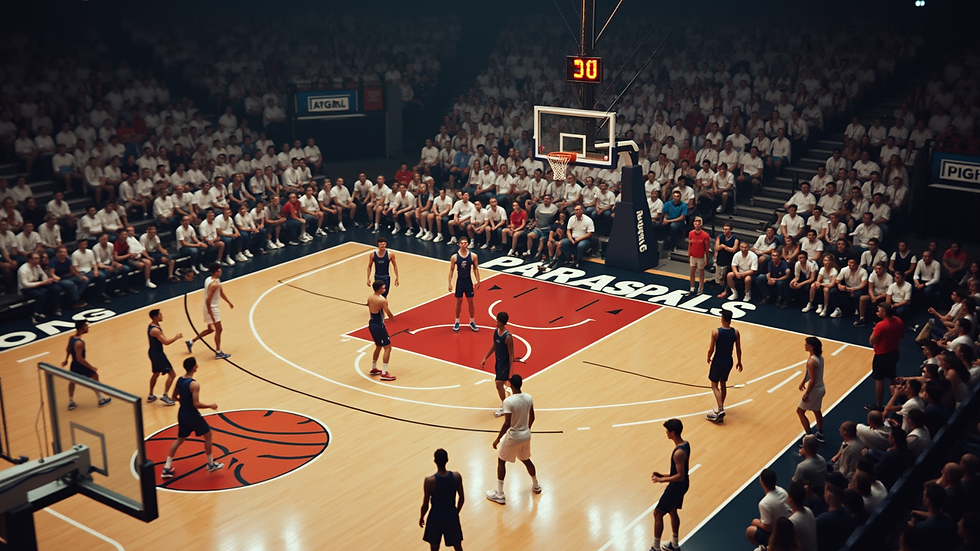Helping Young Players Excel on the Court
- Sherwin Vasallo

- Aug 18
- 3 min read
Developing young basketball players into skilled athletes requires more than just teaching them how to shoot or dribble. It involves a comprehensive approach that nurtures their physical abilities, mental toughness, and love for the game. This guide explores practical strategies and insights to help young players excel on the court, ensuring they build a strong foundation for their basketball journey.
Building a Strong Foundation in Youth Basketball
Starting with the basics is crucial for young players. Coaches and parents should focus on teaching fundamental skills such as dribbling, passing, shooting, and defensive positioning. These skills form the backbone of a player’s development and should be practiced regularly.
Key tips for building fundamentals:
Use drills that emphasize proper technique over speed.
Encourage repetition to build muscle memory.
Provide positive feedback to boost confidence.
Incorporate fun games to keep players engaged.
For example, a simple dribbling drill where players weave through cones helps improve ball control and agility. Consistent practice of such drills will enhance coordination and prepare players for more advanced skills.

The Importance of Youth Basketball Conditioning and Mindset
Physical conditioning is often overlooked in youth basketball but is essential for performance and injury prevention. Young athletes should engage in age-appropriate strength, agility, and endurance training. This can include bodyweight exercises, sprint drills, and flexibility routines.
Equally important is developing a strong mindset. Teaching young players how to handle pressure, stay focused, and maintain a positive attitude can make a significant difference in their growth.
Practical recommendations:
Schedule regular conditioning sessions tailored to young athletes.
Teach breathing techniques and visualization to manage game stress.
Encourage goal-setting to motivate continuous improvement.
Promote teamwork and sportsmanship to build character.
By combining physical and mental training, players become more resilient and prepared for the challenges of competitive basketball.

How much do TBL basketball players get paid?
Understanding the financial aspects of basketball can inspire young players to pursue their dreams realistically. The Basketball League (TBL) offers opportunities for players to earn while playing professionally, but salaries vary widely based on experience, location, and team budgets.
Key points about TBL player salaries:
Entry-level players may earn modest salaries, often supplemented by housing and travel allowances.
Experienced players with strong performance records can negotiate higher pay.
Some players use TBL as a stepping stone to larger leagues with more lucrative contracts.
Payment structures may include bonuses for wins, individual achievements, and community involvement.
While youth players should focus primarily on skill development and passion for the game, understanding the professional landscape helps set long-term goals.

Supporting Youth Basketball Development Through Coaching and Resources
Effective coaching is vital for nurturing young talent. Coaches should create a supportive environment that balances discipline with encouragement. They must also stay informed about the latest training methods and youth sports science.
Parents and communities can support youth basketball development by providing access to quality facilities, equipment, and programs. Encouraging participation in camps, clinics, and leagues exposes players to diverse competition and learning experiences.
Actionable steps for coaches and parents:
Attend coaching workshops and certification programs.
Use video analysis to provide visual feedback to players.
Foster open communication with players and parents.
Promote healthy nutrition and rest habits.
Connect with local organizations that specialize in youth basketball development.
By investing time and resources, the entire support system contributes to the player’s growth and enjoyment of the sport.
Creating a Balanced Lifestyle for Young Athletes
Success on the court is closely linked to a balanced lifestyle off the court. Young players need time for school, family, social activities, and rest. Overtraining or excessive pressure can lead to burnout and injuries.
Guidelines for maintaining balance:
Set realistic practice schedules that allow for recovery.
Encourage hobbies and interests outside basketball.
Monitor academic performance and provide support if needed.
Teach time management skills to juggle commitments effectively.
A well-rounded lifestyle helps players stay motivated and healthy, ensuring they can perform their best when it matters most.
Helping young players excel on the court is a rewarding journey that requires patience, knowledge, and dedication. By focusing on fundamentals, conditioning, mindset, coaching, and lifestyle balance, we can foster the next generation of basketball stars who love the game and play it with skill and heart.






Comments